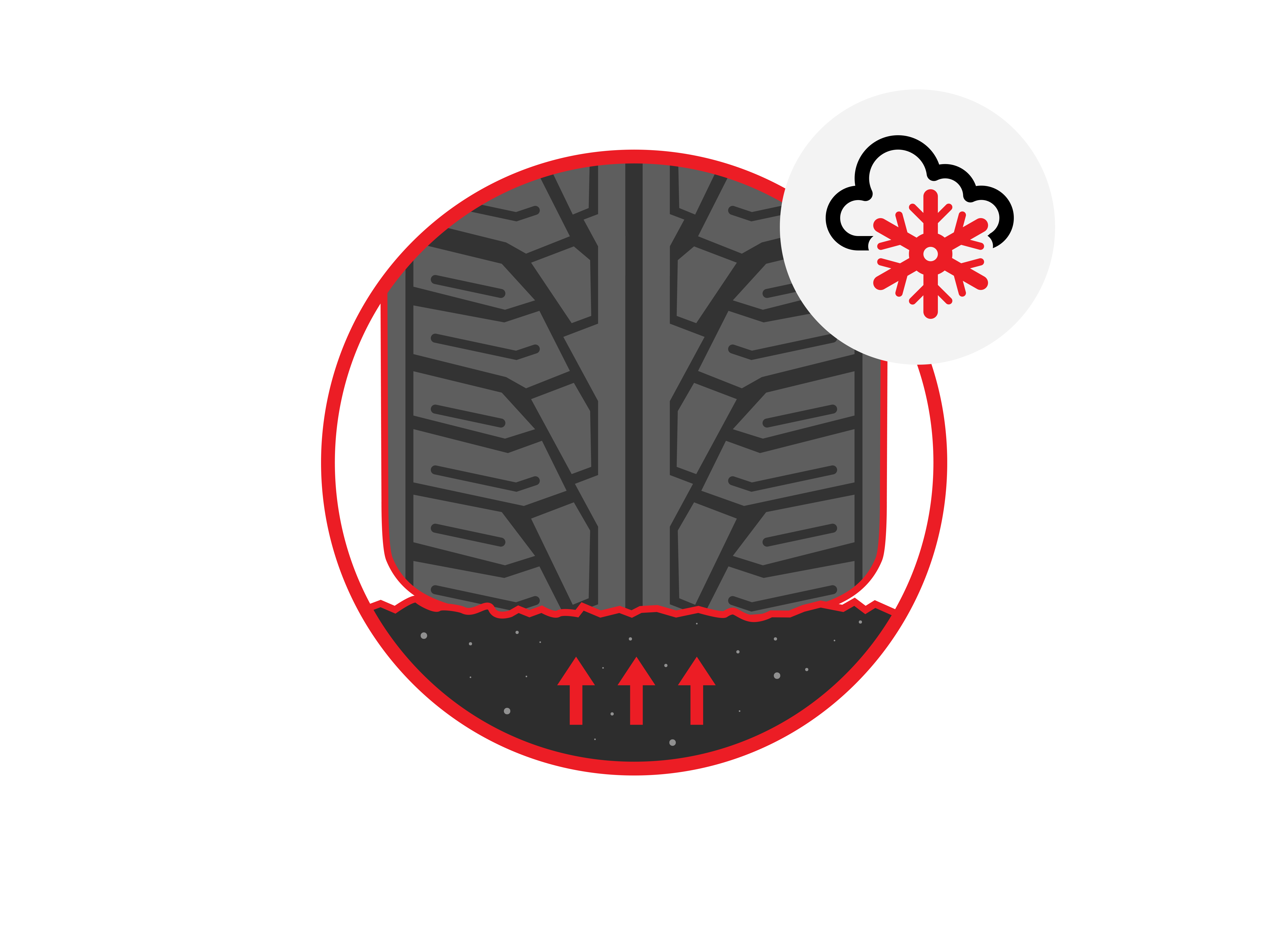
EU Tyre Label
What is the EU Tyre Label?
The EU Tyre Label was introduced to improve safety, promote fuel efficiency, decrease noise levels and give buyers what they need to make informed decisions. It is part of a wider EU Commission Plan to reduce energy consumption by 20% by 2020.
All tyres sold in the European Union are subject to mandatory tyre labelling. A new EU tyre labelling scheme – effective from May 1, 2021 – provides more comprehensive information about selected tyres and also covers heavy-duty vehicle tyres. It provides objective, reliable and comparable information based on three important tyre performance characteristics: rolling resistance – and thus fuel efficiency –, wet grip and external rolling noise. Additional pictograms indicate the tyre's suitability for severe snow conditions (3PMSF symbol) and/or its grip in icy conditions, although the latter applies to passenger car tyres only.
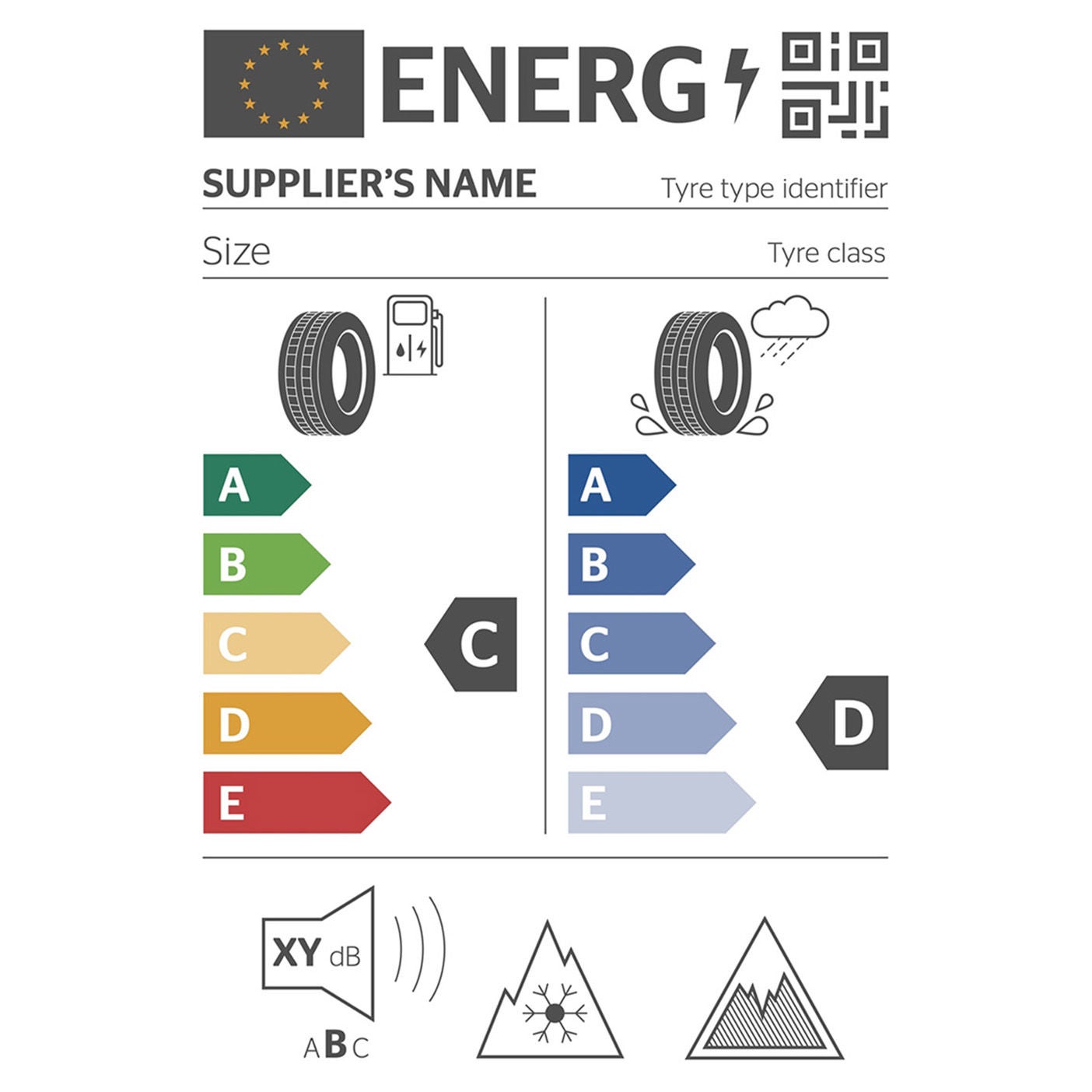
The new labelling scheme covers passenger car, bus and truck tyres. For further details on the new EU tyre labelling regulation please visit the official EU Commission website.
Understanding the EU label and its pictograms helps drivers or fleet managers to make informed decisions about tyre-related road safety, lower CO2 emissions, and greater fuel economy.
Please note that fuel savings and road safety are largely dependent on road and weather conditions, the vehicle type, and, in particular, the style of driving.
How to read the EU Tyre Label
The tyre labelling features easy-to-understand pictograms that provide information on the following three essential aspects of a tyre’s performance.
1. Wet grip
Secure grip in wet conditions is crucial for safe driving. The wet grip rating indicates how well the tyre will perform in wet conditions, with performance graded from class A down to E. A high grade means short braking distances on wet roads.
2. Fuel efficiency
Depending on the tyre’s rolling resistance, its fuel efficiency will range from class A (denoting the best fuel economy) all the way down to class E. Fuel consumption plays an important role from an economic and ecological point of view. This is because low fuel consumption has a positive effect on the carbon footprint of the vehicle, and of heavy-duty vehicles in particular.
3. Noise level
This is the external rolling noise generated by the tyre, measured in decibels. The label shows the noise level rated in classes from A down to C.
Additional pictograms
In addition to the standard label, there are also pictograms − if applicable − relating to performance in severe snow conditions (3PMSF) and/or grip in icy conditions (passenger car/C1 tyres only).
The snow grip pictogram (3PMSF) will be shown for winter and all-season tyres tested under defined winter conditions and that deliver the required severe snow performance.
The ice grip pictogram will be shown for winter tyres with outstanding ice performance confirmed by a defined ice grip test. These tyres are specifically designed for road surfaces covered with ice and compact snow, and should only be used in very severe climate conditions (e.g. cold temperatures in the Nordics). Using ice grip tyres in less severe climate conditions (e.g. wet conditions or warmer winter temperatures) could result in suboptimal performance, in particular for wet grip, handling and wear.
How is rolling resistance linked to fuel efficiency?
As your tyres rotate, they also flex towards and away from the surface of the road, leading to a loss of energy. The amount of energy lost correlates with the rolling resistance of the tyre.
Tyres with low rolling resistance are the most energy efficient. That means it takes less power – and therefore less fuel – to move the vehicle.
Since tyres can account for between 20% and 30% of a vehicle’s fuel consumption, choosing new tyres that are energy efficient will result in direct fuel cost savings.
Tips for efficient driving
For improved fuel efficiency and greater road safety consider the following factors:
- Environmentally aware driving can reduce fuel consumption significantly;
- Check your tyre pressures regularly; low pressure increases fuel consumption and affects braking performance;
Always maintain a safe distance from the vehicle in front;
- Check for signs of uneven wear on the tyres, especially along the edges of the front tyres. Uneven wear could indicate a tracking or suspension problem that could increase fuel consumption and cause your tyres to wear more quickly;
- Avoid harsh acceleration and deceleration; this increases both fuel consumption and tyre wear;
- Follow the vehicle manufacturer’s maintenance recommendations;
- Extra weight increases fuel consumption; regularly clear out non-essential items from your car.
Rolling circumference on tyres
What is permitted?
The rolling circumference is the exact distance your tyres will travel in one revolution – and therefore a critical parameter for working out the tyre dimensions. All the more important, then, for you to be able to calculate the tyre size!
Calculating the tyre size: For new tyre sizes, this is essential
Swapping tyres isn't a problem for most drivers. At least, not if the old and new tyre sizes are the same. However, that is not always the case. Why? The reasons can vary enormously and relate mostly to the driver. For example, you want a larger tyre size to stand out on the roads. However, the reason is often much more mundane. For example, when you buy a new car and wonder if it can use your old tyres. Whatever it is you have in mind, these examples all have one thing in common: a new tyre size also means that the rolling circumference changes. Unintended consequences cannot be ruled out. The reason is that if the rolling circumference differs too much from the standard tyres, it can lead to problems at MOT inspections. So, what is permitted?
This question cannot be answered the same way for everyone. Ultimately, tyre sizes differ from car to car. To find out the tyre size for your car, often all you have to do is look at the sidewall of your tyres. This information is also provided on the inside of the driver’s door. If not, it will be entered by the technical inspector in your car documents. However, these details do not tell you the actual tyre size of your car tyres. However, you can also work it out using this formula.
Calculate the tyre size using a formula
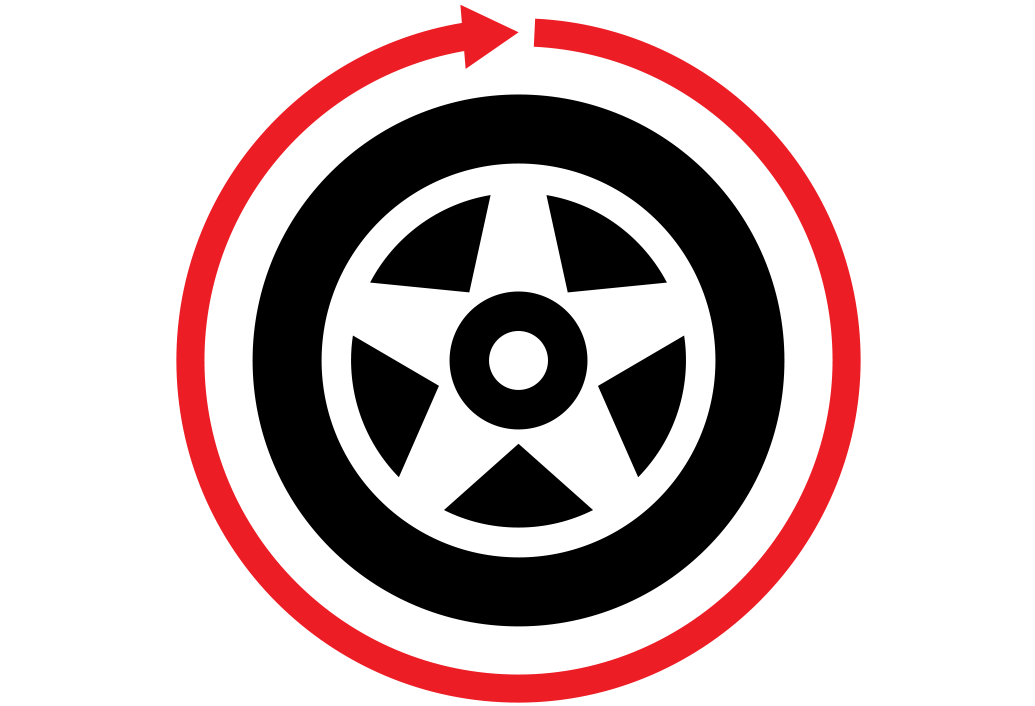
Even without a tyre calculator, it is still possible to calculate the tyre size. For this, all you need is the tyre labelling and the following formula:
C = π x (R + 2 x (H/W)/100 x W)
The tyre circumference is derived from the wheel rim size (R) in inches and the ratio of the height (H) and width (W). For this reason, the wheel rim size (R) is also multiplied by 25.4 to obtain the wheel rim size in millimetres. For example, the circumference for a tyre with the 245/45 R 18 label works out as follows:
C = π x (18 x 25.4 mm + 2 x (45/100) x 245 mm) = 2,129 mm = 212.9 cm = 2.129 m
Calculating the tyre size: The final step
Now you have to calculate the percentage difference in the rolling circumference of your old and new tyres. A change may not exceed 1.5 to 2.5 percent. These parameters set the tolerance for rolling circumference. The reason is that an excessive difference in the values can lead to complications in integrated systems, such as the ABS or ESP. This is especially true for deviations between the front and rear wheels. That is a substantial impairment that the inspector will not accept. A word of caution: The calculated values serve only as a guide. What tyre circumference is actually allowed is decided solely by your technical inspector.
Rolling circumference affects the speedometer
A difference in the tyre size will also change the rolling circumference. But did you know that it will also affect the speedometer? The speedometer works out the speed of a car through the wheel revolutions. So, if you switch to larger tyres, the speed displayed on your speedometer will be less than the actual speed at which you are travelling. Smaller tyres, on the other hand, result is a higher speed on the speedometer. The display may show 10 per cent +4 km/h more than the actual speed of the vehicle, and not one km/h more. If the difference is too great, the speedometer will have to be adjusted.
Check the rolling circumference of the tyres you have now and then for the tyres you want with the help of our formula. Are you still looking for the tyres you want? Discover a wide selection at Uniroyal.
Tyre load index
What does this mean?
The tyre load index (also known as the load capacity index, tyre load rating or tyre hire load index) identifies the maximum load capacity of a tyre, i.e. the absolute carrying capacity. You will find this information on your tyres. But how is this number calculated?
Tyre load capacity: Calculator for the maximum load
If you would like to go on holiday with a packed car or help someone move, it is important to know how much weight your tyres can carry. A tyre is not designed for loads of any size. That's why it is important that you know and do not exceed the load capacity of your tyres. The tyre load capacity is not so well known. The figure indicates the maximum possible load of a tyre. To calculate the load your rims and car can carry, in theory you can just take a look at your vehicle registration or the tyre sidewall. You will find the tyre labelling there.
The two- to three-digit number in the penultimate position stands for the tyre load capacity of your tyres. However, these indicators do not reveal anything about the permissible load in kilograms. So this is a useless indicator in everyday life. It is easier to calculate the tyre load rating using our load index table for tyres. There you can find the maximum load in kilograms for the respective rating. For a tyre code with the digits 195/55 R16 87 V, the 87 in the penultimate position is relevant: This represents a tyre load rating of 87, i.e. a load capacity of 545 kilograms.
Load capacity index of tyres: Preventing exceedance
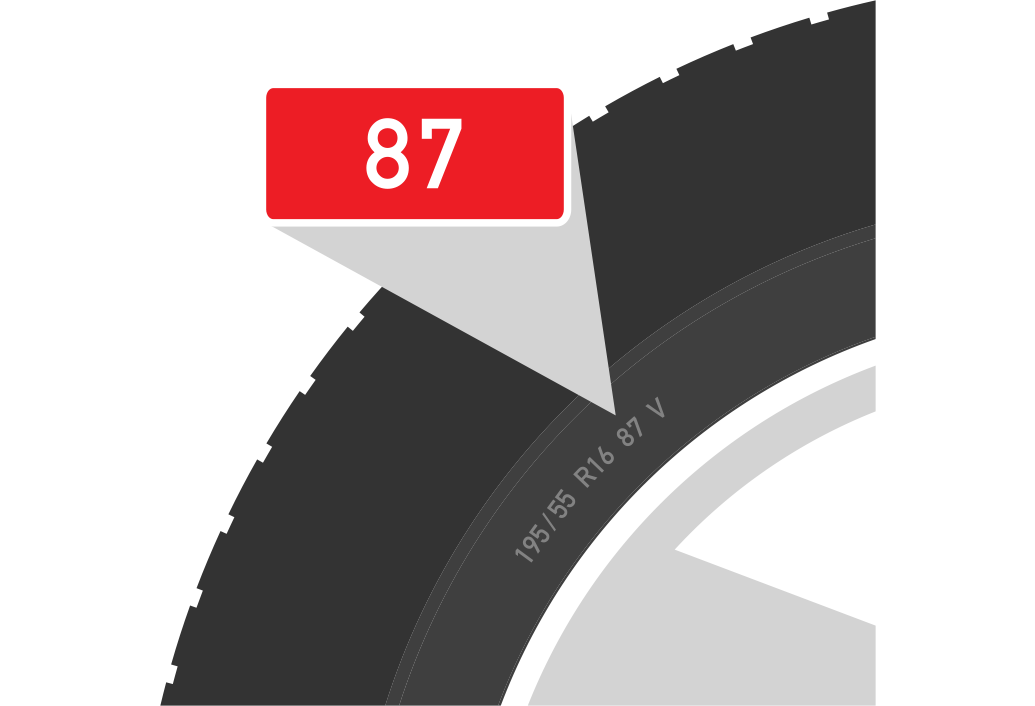
It is a legal requirement that the indicated tyre load capacity is not exceeded. In addition, you avoid the risk of tyre damage. Your vehicle speed and the air pressure in the tyres also influence the relative indicator of load capacity. Driving at high speed and with heavy loads exerts forces that put a high amount of stress on the tyres. If the load becomes too great, the tyres can become damaged. Other factors often come into play here, such as the tyre lifespan. But one thing is certain: By staying within your tyres’ load capacity, you can virtually eliminate damage caused by excess loads.
The tyre air pressure is important when it comes to the tyre load capacity. The load capacity of your vehicle gradually decreases as the air pressure reduces. In turn, the load capacity increases as the air pressure increases. However, the recommended guide value should not be exceeded as this can change driving behaviour. In principle, the following applies: Increasing the air pressure by 0.1 bar increases the tyre load index of the tyre by one value.
Load capacity index: The factors to be considered
The information in the load index table for tyres is based on an assumed tyre pressure of 2.5 bar. However, experience shows that the value is not adhered to in many cars. The pressure is only seldom checked, with the result that tyres are simply not adequately filled. Inadequate tyre pressure has a negative effect on driving behaviour.
Check the air pressure of your tyres on a regular basis and increase it above the target value by a few tenths of a bar as necessary. This way, you will increase your tyre load capacity and guarantee safe driving behaviour.
Load capacity calculator for your tyres
Checking the table is the easiest and surest way to calculate the load capacity index of your tyres. However, it is possible to find out the next highest values without a table if the permissible weight for a rating is already known. Nevertheless, deviations cannot be ruled out. For this reason, we recommend using our table to calculate the exact load capacity of your tyres.
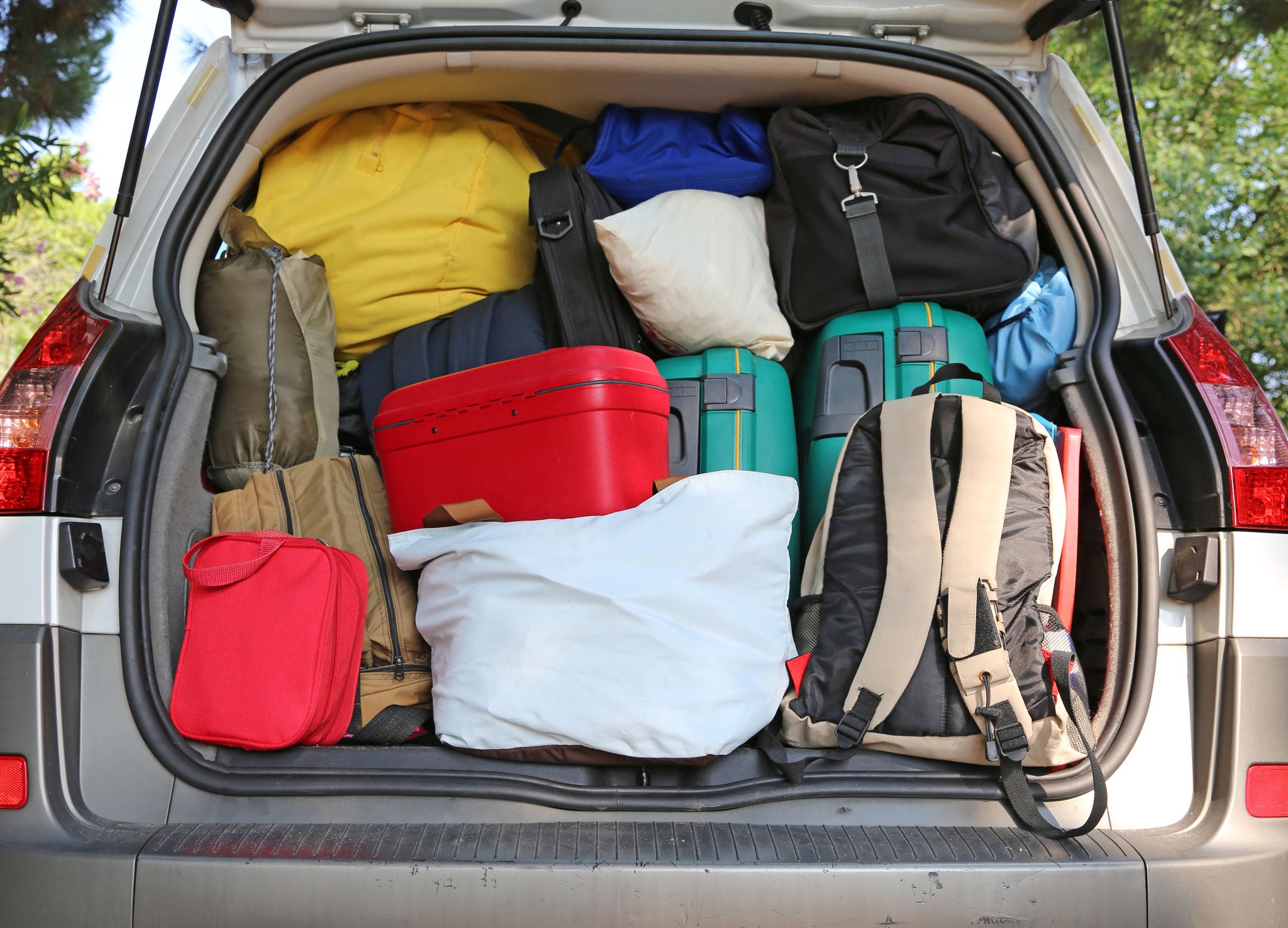
Tyre load index: Summer vs winter tyres
There is not necessarily a deviation between the load index of a summer tyre and that of the winter tyre. However, if the tread depth or diameter differs, the tyre probably has a different load capacity index. In winter, tyres have to meet more weather challenges than in summer. Whether on snow or ice, driving becomes more difficult and braking distances become longer. This means that: Higher loads mean that drivers have less control over their cars. So take the different load capacities seriously and ensure maximum safety.
| Load Index | Load in kg | Load Index | Load in kg | Load Index | Load in kg | Load Index | Load in kg |
| 62 | 265 | 79 | 437 | 96 | 710 | 113 | 1150 |
| 63 | 272 | 80 | 450 | 97 | 730 | 114 | 1180 |
| 64 | 280 | 81 | 462 | 98 | 750 | 115 | 1215 |
| 65 | 290 | 82 | 475 | 99 | 775 | 116 | 1250 |
| 66 | 300 | 83 | 487 | 100 | 800 | 117 | 1285 |
| 67 | 307 | 84 | 500 | 101 | 825 | 118 | 1320 |
| 68 | 315 | 85 | 515 | 102 | 850 | 119 | 1360 |
| 69 | 325 | 86 | 530 | 103 | 875 | 120 | 1400 |
| 70 | 335 | 87 | 545 | 104 | 900 | 121 | 1450 |
| 71 | 345 | 88 | 560 | 105 | 925 | 122 | 1500 |
| 72 | 355 | 89 | 580 | 106 | 950 | 123 | 1550 |
| 73 | 365 | 90 | 600 | 107 | 975 | 124 | 1600 |
| 74 | 375 | 91 | 615 | 108 | 1000 | 125 | 1650 |
| 75 | 387 | 92 | 630 | 109 | 1030 | 126 | 1700 |
| 76 | 400 | 93 | 650 | 110 | 1060 | ||
| 77 | 412 | 94 | 670 | 111 | 1090 | ||
| 78 | 425 | 95 | 690 | 112 | 1120 |
Tyre load rating table
Tyre speed ratings
What is the meaning behind the speed rating
Tyre speed ratings tell you the maximum speed that particular tyre is legally approved for. This measurement ensures that the tyre you buy is appropriate – and safe – for the speed of the car it’s fitted on.
Where do I find the tyre speed rating?
The speed rating is displayed on the tyre’s sidewall, after the load rating. In this example, the car’s speed rating is W, which indicates that it has been legally approved for use up to 168 mph.
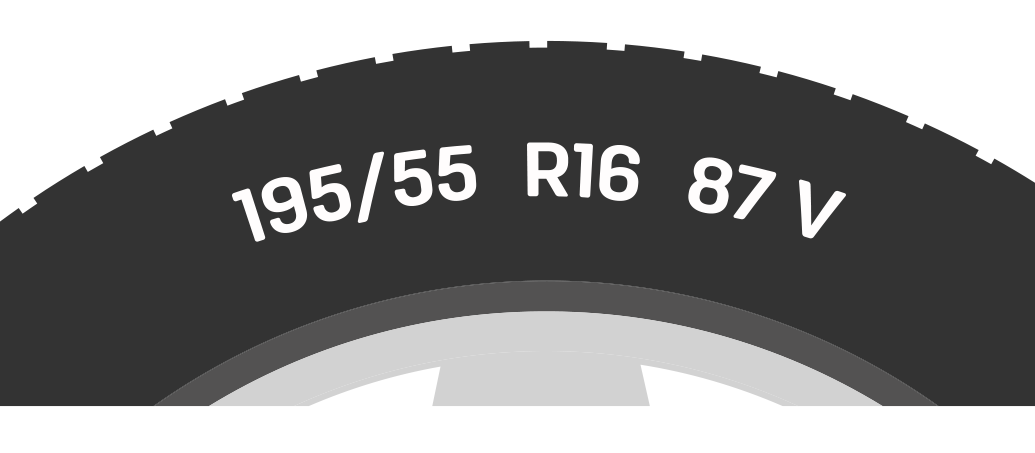 Speed rating on a tyre sidewall
Speed rating on a tyre sidewall
How is the speed rating calculated?
Speed ratings are based on laboratory tests in which the tyre is run at 6.2 mph steps, in 10 minute increments, until the required speed has been met. To receive its rating it must demonstrate that it can sustain a particular speed when tested with simulated loads.
The speed rating is represented by a letter – A being the lowest and Y being the highest. As you will see on the chart below, there are some anomalies as car manufacturers have increases the speeds of their vehicles and speed ratings have been introduced to match them.
| Speed Rating | Maximum Speed | Type/Vehicle Type |
| L | 75 mph 120 km/h | Off-Road & Light Truck Tyres |
| M | 81 mph 130 km/h | Temporary Spare Tyre |
| N | 87 mph 140 km/h | Tempoary Spare Tyre |
| Q | 99 mph 160 km/h | Winter 4x4 |
| R | 106 mph 170 km/h | Heavy Duty Light Truck |
| S | 112 mph 180 km/h | Family Sedans & Vans |
| T | 118 mph 190 km/h | Family Sedans & Vans |
| U | 124 mph 200 km/h | Sedans & Coupes |
| H | 130 mph 210 km/h | Sport Sedans & Coupes |
| V | 149 mph 240 km/h | Sport Cars |
| Z | 149+ mph 240+ km/h | Sport Cars |
| W | 168 mph 270 km/h | Exotic Sport Cars |
| Y | 186 mph 300 km/h | Exotic Sport Cars |
| (Y) | 186+ mph 300+ km/h | Exotic Sport Cars |
Are speed ratings just about speed?
No. They’re also about ride comfort, traction, tread wear and cornering ability. A higher speed rating generally offers better grip and stopping power, but it may have a lower tread life and reduced performance in cold weather. That’s why V, Z, W and Y-rated tyres are usually better suited to high performance vehicles in warmer climates.
You can increase the speed rating of your vehicle’s tyres for improved performance, but can never decrease it without reducing the vehicle’s top speed to that of the lower speed rating selected.
Can I mix speed ratings on my vehicles tyres?
If you are going to mix speed ratings, which we don’t recommend, make sure the lower rated tyres are on the front axle, regardless of whether your vehicle is front-, rear- or four-wheel drive. This is to prevent a potential oversteer scenario. Bear in mind that all tyres must be appropriate for the vehicle and you should drive no faster than your lowest rated tyres.
We would always recommend that the same size and type of tyre, with the same speed ratings, are fitted on all tyres.
Tyre buying guide
What to consider before buying new tyres
Before you head off to your local tyre dealership or buy your next set of tyres online, there are a few things you need to consider:
What is your local climate?

The decision about whether to buy summer tyres, winter tyres or all-season tyres comes down to the average temperatures where you live and drive. If, for example, temperatures near you tend to drop below 7ºC in winter, you’ll need winter or all-season tyres. Remember, however, that winter tyres aren’t suitable for year-round use, so you’ll also need a set of summer tyres. Different countries have different laws so make sure you find out where in Europe winter tyres are mandatory. Also, if you live somewhere where you’ll be frequently driving in the rain, you may want to consider rain tyres.
What is your style of driving?
Do you use your car occasionally to make short journeys or do you enjoy long, sporty drives where you can put your foot down? How far, and how fast, you drive will determine your tyre choice. For example, RainSport 3 is a summer tyre suitable for fast, sporty cars whereas the AllSeasonExpert is ideal for infrequent drivers.
What vehicle do you drive?
Some tyres are at their best when fitted to specific vehicles. Rain Max 2 and Snow Max 2 are ideal for vans and light trucks whereas the rallye 4x4 street is designed for SUVs and off-road cars. You can find out the make and model of your vehicle’s original tyres from its manual, along with other recommendations, but nothing beats doing your own research.
What matters to you when it comes to your tyres?
There are many things to consider when choosing tyres and sometimes you have to weigh up what really matters to you. For example, is fuel efficiency a priority? Are you looking for tyres that will last a long time? What about aquaplaning safety, cornering stability and driving comfort?
What can you afford?
Tyre prices do vary but, as is often the case, you get what you pay for. As well as asking your dealer for advice, it’s worth comparing EU Tyre labels as these will give you information about each tyre’s fuel efficiency, noise emission and wet grip performance.
Related Topics
-
 2023/09/20Summer or winter tyresRead more
2023/09/20Summer or winter tyresRead more -
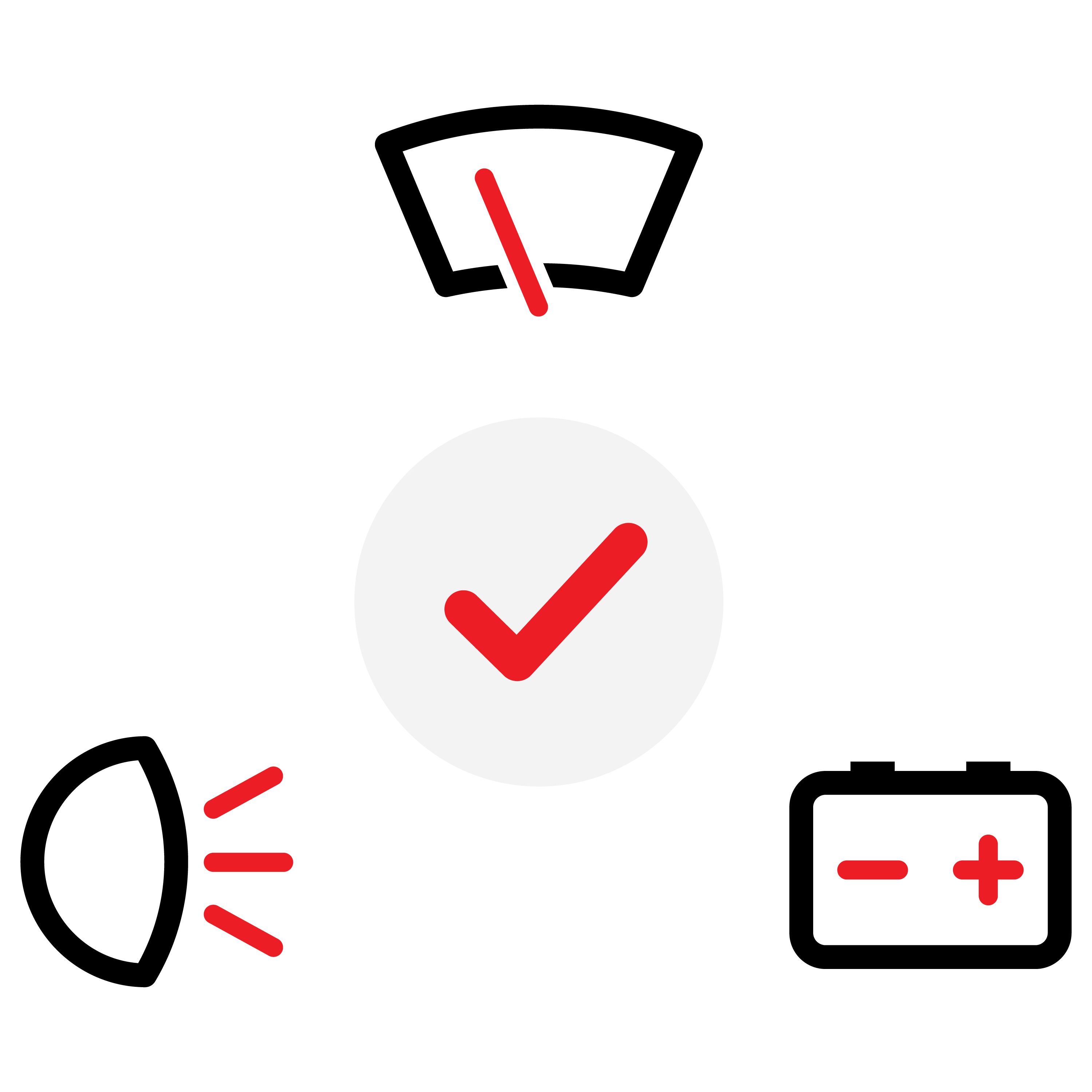 2023/09/20Safety & Driving TipsRead more
2023/09/20Safety & Driving TipsRead more -
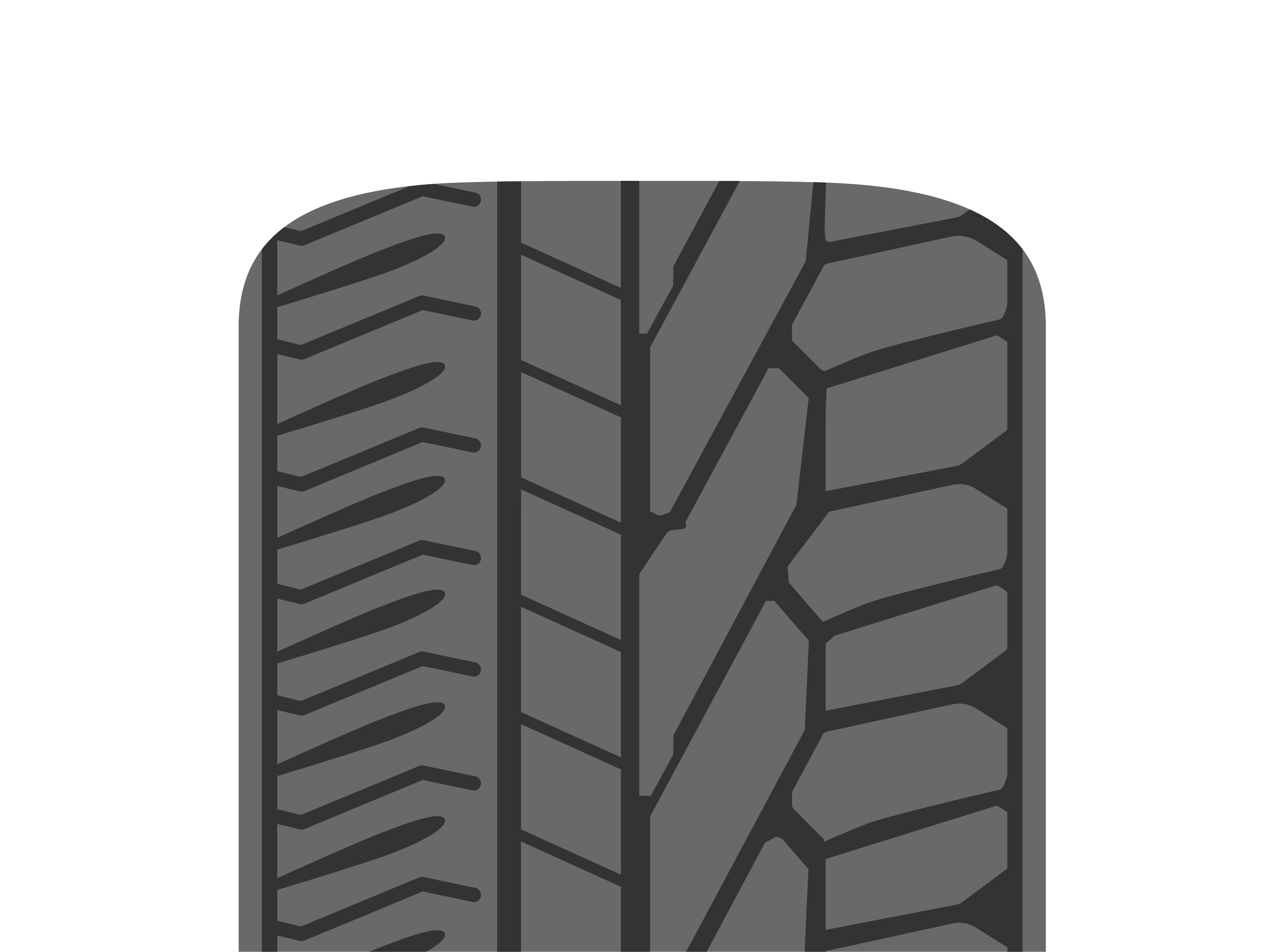 2023/09/20Tyre materialRead more
2023/09/20Tyre materialRead more